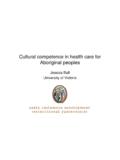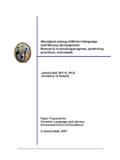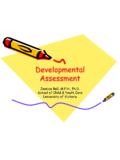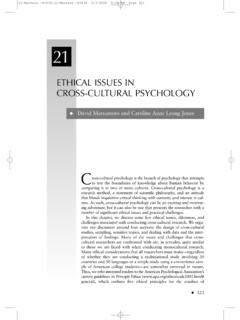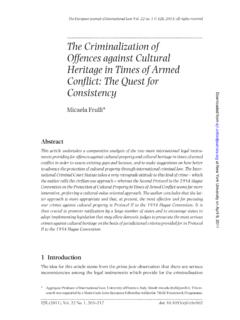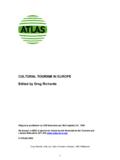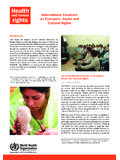Transcription of Cultural Safety in Practice with Children, Families …
1 Early childhood developmentintercultural partnershipsCultural Safety in Practice with children , Families and CommunitiesJessica Ball, , of Child and Youth Care, University of VictoriaCultural Safety is respectful engagement that supports and protects many paths to well-being. Finding our way to wellness among diverse communities of children andfamilies requires many pathways. No one approach, no one program model,will reach or work for everyone. Meadow Lake Tribal Council AdministratorQQHow can we reduce the sense of personal risk that some people experience when coming to a program, service, or project? My grandparents taught me that to truly understand the importance of something you must look back seven generations and you must look forward seven generations. Debbie Jette, Cree ElderIndicators of Cultural un- Safety Low utilization of available services Denial of suggestions that there is a problem Non-compliance with referrals or prescribed interventions Reticence in interactions with practitioners Anger Low self-worth Protests about lack of Cultural appropriateness of tools and interventions transported from dominant culture to minority cultureCulture:forms and goals of interactions among members of a group, and how they understand and communicate with one sensitivity:appreciating that there are differences among competence:being skilled in understanding interactions among members of a culture on their own Safety .
2 The outcome of interactions where individuals experience their Cultural identity and way of being as having been respected or, at least, not challenged or Safety is an outcome. It is determined by the recipient of a service, or the participant in a program or project. Respectful relationships create Cultural Safety . Equitable partnerships appreciate that all parties have the right to influence the terms of engagement. The quality of engagement contributes importantly to purpose Build on strengths Avoid negative labelling Ensure confidentiality Be accountable Do no harm Make it matter: Ensure real benefits CulturalSafety5 PrinciplesProtocolsPartnershipsProcessPo sitivepurposePersonalknowledgeProtocolsS how respect Ask permission/informed consentSeek Cultural knowledge Ask questionsDemonstrate reciprocity Learning goes both waysEngage community accompaniment Find allies, mentors in community of practicePersonal knowledgeHone critical consciousness of social location/powerWho are you?
3 Cultural affiliations, professional personaIntroduce yourself in terms of your Cultural identitiesPartnershipsEngage in relational Practice founded on authentic encountersShare knowledge vs. telling Collaborative problem solving vs. expert/authorityStrengthen mutual capacity vs. one-way delivery Co-construct ways to move supports into placeProcess Ensure equity and dignity for all parties Negotiate goals and activities Talk less, listen moreCultural perspectives on:Practitioner implications:1 Goals for development1 Goals for program, services, or intervention2 How to support optimal development 2 Conceptual understandingsand quality of life3 How to respond to development or life problems3 Choice of program activities, service method, intervention strategy4 Who is best positioned to help4 Capacity development and deployment (recruitment, training, staff assignments)What can we do to create culturally safe environments and encounters?
4 Equity Dignity Critical self-consciousness EngagementOnce upon a : Cultural heterogeneity/Insular communitiesAnd : Cultural homogenization/Silencing and resistanceSo : Cultural reconstructionPersisting racism and essentialismIn :Hybrid cultures and identitiesBraiding together: It s about us! QTo learn more:All are embedded in particular Cultural histories,contexts, and are these? How are they informing interactionsand ideas about what isgoing to happen? Tools, curricula, intervention strategies, and treatment approaches. Practitioners, educators, researchers. Program participants, clients, parents, service recipients. Cultural Safety and the analysis of healthpolicy affecting Aboriginal Smye and A. Browne, Nurse Researcher(2002), 9 (3): Safety in nursing: the New Papps & I. Ramsden. InternationalJournal for Quality in Health Care (1996), 8 (5): National Discourses in Anti-RacistCurricular Schick and V.
5 St. Denis, Canadian Journalof Education (2005), 28 (3): information and
